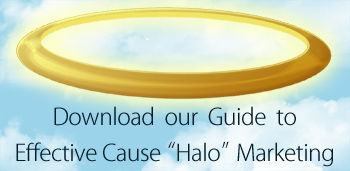We told you yesterday people are spending their money with companies that align with their values.
Today, we want to share examples of 5 companies who took the purpose-driven next level. As you read through these examples, see if you can find ways to incorporate them into your brand so you, too can contribute to a new, sustainable and inclusive economy.
The mission? Flower into a person/group/brand with actions, goods, services and experiences that will delight people/customers while looking after our big, beautiful world.
Read more to learn about the brands doing good for good.
 ICRC x Fortnite: The Red Cross enters the Fortnite universe
ICRC x Fortnite: The Red Cross enters the Fortnite universe
The International Red Cross (ICRC) partnered with hit video game Fortnite to launch Liferun: a game showcasing the work its workers do to help civilians in conflict zones. Instead of entering Fortnite’s usual fight-to-the-death mode, Liferun players are rewarded for saving lives, rebuilding infrastructure and distributing aid quickly.
By creating a video game that enables players to experience the work the ICRC performs the Red Cross is building empathy with new audiences.
Ask yourself: what would be the perfect (new) channel for our message and audience?
 IKEA: An IKEA store with zero parking
IKEA: An IKEA store with zero parking
IKEA is building a seven floor store in Vienna with no parking spaces. Shoppers will be expected to arrive on foot or by public transport, with large items delivered to people’s homes. The store features a public rooftop park with 160+ trees.
Bank of America’s strategists (echoed by IKEA itself) called out that Western consumers had reached ‘peak stuff’ nearly five years ago. IKEA is the latest manifestation of the brand’s attempt to transition to sustainability- and community-focused waves.
Ask yourself: Have the big waves that underpin your business or industry peaked? Which ones can you ride next?
 Lexilife: Lamp helps people with dyslexia read easily
Lexilife: Lamp helps people with dyslexia read easily
Lexilight lamp makes it easier for people with dyslexia to read. And with one in ten adults with some form of dyslexia, this lamp could be transformative for millions.
'Inclusivity’ might feel like a buzzword, but in 2020 the quest for a truly inclusive consumerism is far from complete. Long gone are the days when a brand is deemed inclusive simply because of an ad campaign featuring a plus-sized model.
Ask yourself: What practical and fundamental innovation can you roll out to serve people belonging to niched, underserved, and marginalized groups?
 Heineken: Dry January? Heineken has you covered
Heineken: Dry January? Heineken has you covered
Heineken gave away its 0.0% alcohol-free beer to people for Dry January 2020, the public health alcohol abstention campaign. Customers sign up on a dedicated January Dry Pack website to receive a limited edition white and blue calendar, with one can of beer to open for each day of the month.
Every successful trend is grounded in a fundamental human need, and the desire to be a better – healthier, more ethical, smarter – person is something we all aspire to! The past decade has seen an explosive growth in the number of campaigns focused on helping people embrace new habits and tap into a communal sense of purpose: Dry January, Veganuary and Sober October to name just a few! Big lifestyle changes can feel intimidating, but these campaigns allow participants to start with a smaller and more accessible step.
Ask yourself: If your product or service requires people to change their behavior, then could you tap into a relevant charity campaign in order to introduce it in a way that makes it less intimidating?
 Gucci: Gucci puts GREEN PRESSURE on business leaders
Gucci: Gucci puts GREEN PRESSURE on business leaders
Gucci’s CEO, Marco Bizzarri, launched the CEO Carbon Neutral Challenge: calling on the fashion industry to commit to a carbon neutral future. When a company joins the initiative it must complete a full audit of its greenhouse gas emissions within one year, and commit to six principles that will lead to the reduction of its carbon footprint. Members will be listed on the Gucci website, and hold themselves accountable for hitting their targets.
Rising awareness of a climate emergency, combined with the mainstreaming of affordable and high-quality eco-alternatives, means that eco-consumption is becoming less about the status of opting in, and more about the shame of failing to do so.
Let’s be clear: a systemtic shift in the nature of, and our attitude to, consumption is needed. And in these moves it’s just about possible to glimpse the beginnings of that shift.
Ask yourself: Consumers won’t expect you to be perfect. But they will expect that you start making the big changes needed. What changes will you make this year?















